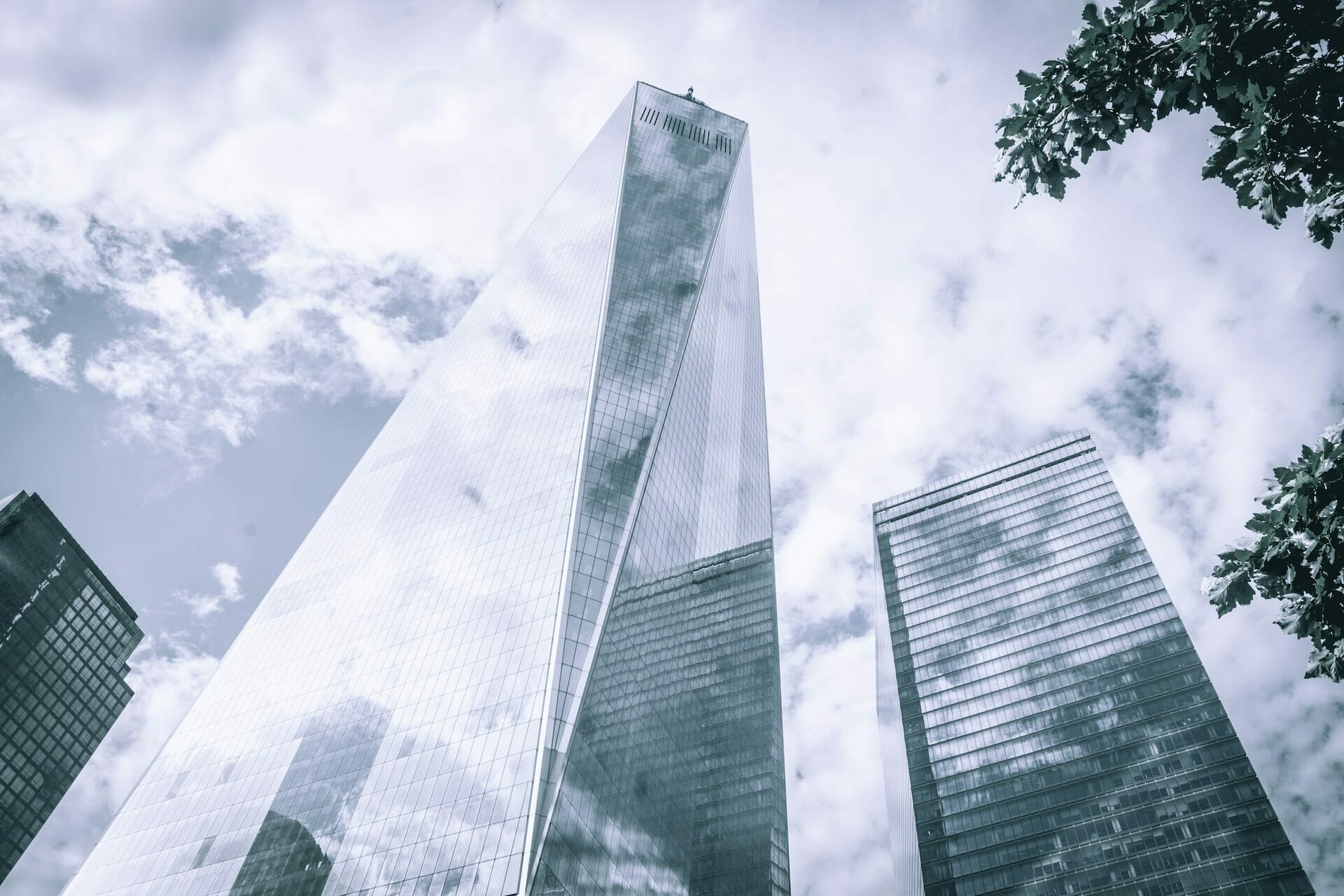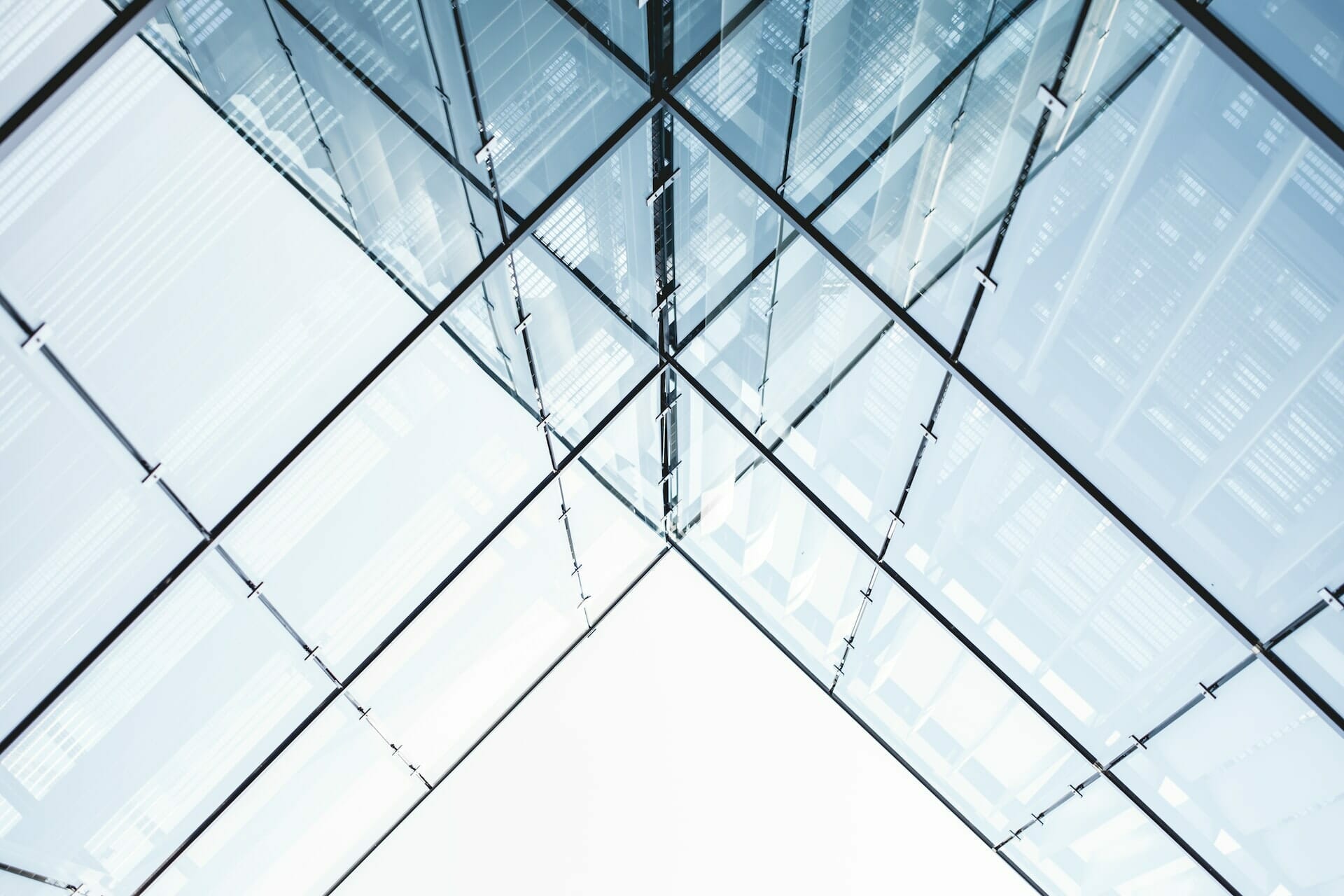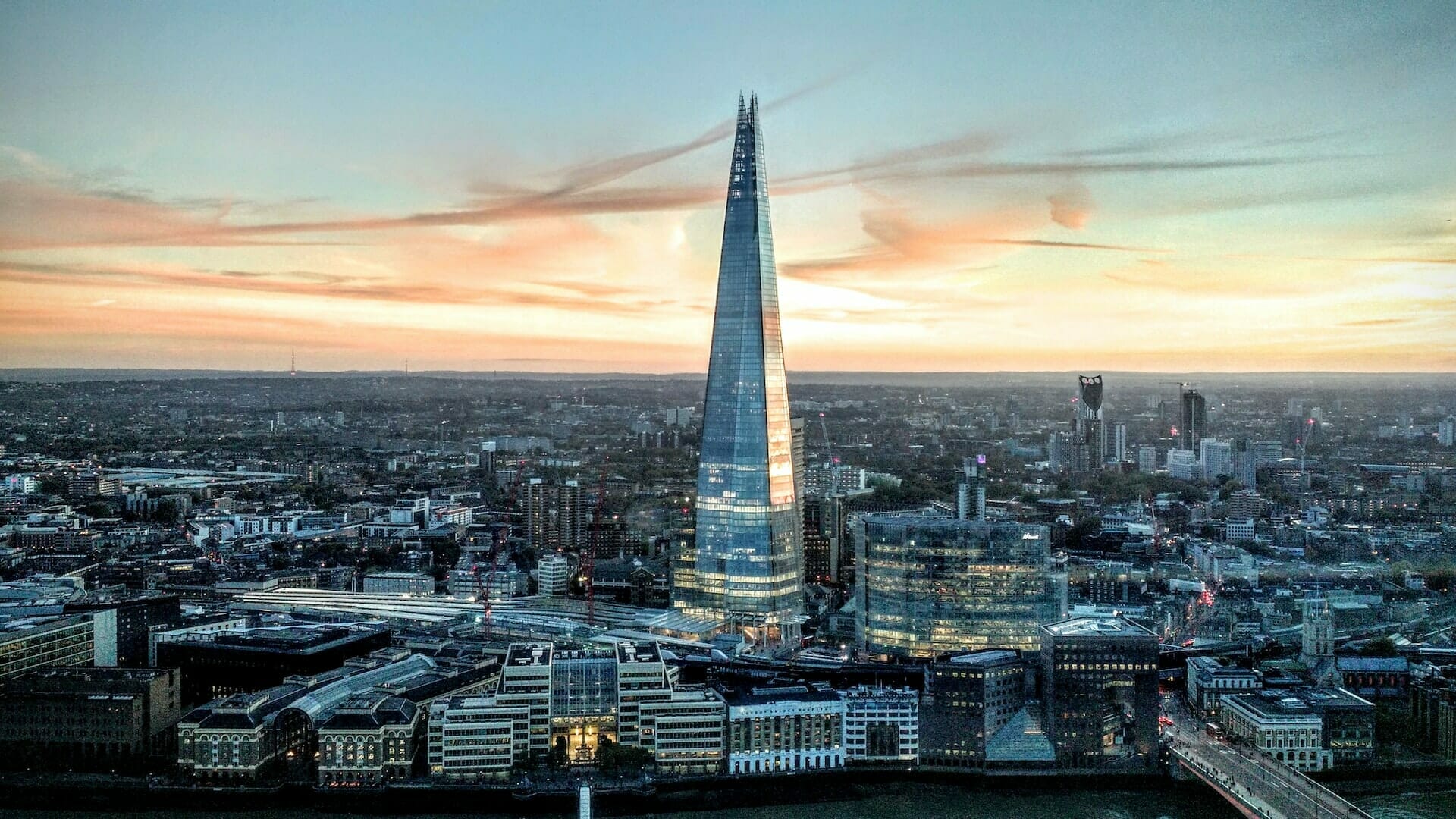
Glass buildings are becoming an increasingly popular choice for architects and engineers worldwide for their newest city skyscrapers. They look striking in the cityscape as they contrast the older and somewhat drab office blocks of the past century. They also provide stunning panoramic skyline views and allow natural light into the buildings, creating a brighter, more productive work environment.
There is a lot of debate about whether glass buildings should continue to be a part of our cityscapes going forward. This is due to several factors regarding the challenges met with temperature regulation. However, glass remains a highly sustainable construction material with minimal environmental impact in production and installation. We’ll be discussing the reasons for people’s worries surrounding glass-fronted structures and what can be done to ensure glass structures of the future are as eco-friendly as possible. We will also look at what happens when glass buildings go wrong and look at some exciting glass skyscrapers of the future.
Why Are Glass Buildings So Popular?
Natural Daylight
The benefits of natural light on productivity make glass-fronted buildings the favourite office location. The increased amount of daylight coming in through large windows means a building will feel bright even on overcast days.
Quick & Easy To Build
Longer and more complicated building processes cost more money. It’s that simple. Not only do glass structures look good, but they also help to bring down construction costs and speed up the job. Glass curtain walls are also a lot easier to make and install than constructing a building exterior.
Corporate Transparency
Some would argue that there is an underlying reason for the sudden popularity of glass-fronted office blocks. Those businesses that operate in buildings with many windows are supposedly a way of promoting transparency within their company. It removes their ability to work behind closed doors, so those businesses in glass buildings are stating that they have nothing to hide.
Connection To Outside
Not only is the external view of a glass skyscraper appealing, but those on the inside looking out can benefit from some spectacular city views. Having a greater connection to the outdoors, mainly if you work at a desk all day, can help promote more positive mental health. It may also remind those inside to step outside once in a while and get some fresh air.
The Controversy Of Glass Skyscrapers
There is much debate regarding the sustainability of glass buildings, particularly skyscrapers. So much so that architects are calling for a ban on the construction of all-glass buildings. This is due to the difficulty met when trying to regulate indoor temperatures.
Glass technology has been improving rapidly over recent years. The heat used to be kept out by installing tinted glass, but this led to valuable natural light not being able to get through. An alternative technology of spectrally selective glass coatings is more widely used nowadays. This enables the benefits of visible light to filter through while still blocking out non-visible heat-carrying rays.
There is, however, a downside to this new technology. As the heat can no longer penetrate through the glass, it is reflected outwards. Heat cannot disappear, so the heat is reflected downwards onto pavements and other buildings. If this heat meets another glass façade, it will become blocked at street level, posing a risk to passers by and parked cars.
A Giant Greenhouse
If we consider glass buildings on a much smaller scale, you will most likely think of a greenhouse. An inner-city skyscraper is a giant greenhouse. Glass is a poor insulator and can easily cause overheating in sunny weather. Gardeners have struggled to maintain a consistent temperature in their greenhouses for many years. Temperatures drop too low in the winter and soar far too high in the summer for things to grow inside comfortably.
Anyone familiar with using a greenhouse will know the extra lengths you have to go to regulate temperatures in unpredictable weather. Any structure made up of too much glass and not enough ventilation is at risk of reaching dangerously high temperatures in the summer months. Greenhouses must be ventilated and artificial shades installed to reduce greenhouse heat.
Their Environmental Impact
Standard glass building façades require a lot of energy to cool down. This energy doesn’t come easily and can significantly impact a city’s carbon emissions. The sudden increase in the popularity of glass skyscrapers will only keep adding to these emissions if they are not built in such a way to counteract this.

When Glass Buildings Go Wrong
No building structure comes without its risks. Although the technology for giant glass skyscrapers is ever-evolving, several examples show the potential risk of building such a structure out of a fragile material.
The Crystal Palace
London’s Crystal Palace is associated with a football team today, but many are not aware of the enormous glass structure that gave the place its name. Initially commissioned for ‘The Great Exhibition’ in 1851 in Hyde Park, the building was famous for its magnificent glass exterior held together only by an iron framework. However, these materials soon caused problems, and the palace had to be moved to another location. Thousands of people enjoyed the new grounds. However, managing the indoor temperature was proving impossible in the summer months.
Unfortunately, the palace was doomed from the start. In November 1936, a small fire broke out in the women’s cloakroom and spread rapidly due to the timber flooring used throughout the building. The palace was destroyed entirely despite its shell being made of non-flammable materials. This was because when glass reaches a high enough temperature, it can shatter. As the flames engulfed the glass panes, the supporting iron structure lost stability and became weak in the heat.
Fenchurch Street’s ‘Walkie Talkie’
A more recent incident occurred with one of London’s newest glass skyscrapers, Fenchurch Street’s ‘Walkie Talkie’ building. Deemed the ‘Death Ray’, this 38-story skyscraper in the heart of the city has been the subject of various news articles because it is melting objects on the street below.
The groundbreaking concave design of the structure has won awards, and it’s the building’s shape that gives it its name. However, a fundamental design flaw means that the glare reflecting off the glass front creates a lot of excess heat, enough to melt a car! The building has now been fitted with a sunshade to prevent further issues.
1095 Avenue Of The Americas
The UK is not the only home to glass-related mishaps. A 1970s mid-sized skyscraper in Manhatten underwent refurbishment in 2007. A man who had parked his van on the street was returning to put some money in the parking meter. A pane of glass fell from the twenty-seventh floor as he was approaching. The glass narrowly missed the man but did smash into his van and shattered up to 100 feet in distance. Thankfully, nobody was injured. However, it was a startling reminder of the fragility of glass as a building material.
Las Vegas’ Vdara Hotel & Spa
Another building with a lethal death ray is the Vdara hotel in Las Vegas, Nevada. This particular building has a similar structure to the Walkie Talkie in London and has similar problems. Due to the nature of the building, the desert sun reflects off the glass at a certain angle. People in the pool below have complained about getting severe sunburn. The building acts as a giant magnifying glass for the heat, causing the pool temperature to increase by up to twenty degrees at specific points of the day.
Can Glass Buildings Be Green?
The big question for debate is whether the all-glass skyscrapers can be made sustainable enough to carry on construction. There is no doubt they have already made a massive impact on the appearance and modernisation of some of the world’s most remarkable skylines. However, if certain modifications aren’t made, they risk negatively impacting the environment.
Glass is currently synonymous with the most unsustainable building structures. So, how can we work to change that? Glass is essential for all buildings. Still, for structures to have entirely glass façades, an efficient technique of temperature management must be developed that has a minimal impact on the environment. The air conditioning that is currently used is a massive energy user and not sustainable long-term.
Glass: A Sustainable Material?
Glass as a material is one of the least impactful on the environment. It is made out of sand, soda ash, and salt cake. It is also manufactured in large sheets and is more lightweight than other construction materials. These raw materials are non-polluting. The manufacturing process is relatively quick and doesn’t require a lot of energy consumption. Depending on the quality and thickness of the glass, the more or less effective it will be as an insulator.
How To Ensure A Glass Building Is Sustainable
For a building to be considered ‘green’, it must actively work to minimise both energy and water consumption. All-glass facilities currently struggle with their increased energy consumption. The structure of the building may have a minimum environmental impact. However, everyday usage is where issues arise. These buildings must provide a way to offset the energy and water they are using. Sunshades are already being introduced to minimise the external impact of these glass structures.
There is much opportunity for glass skyscrapers to harvest solar energy and heat energy to power the temperature control inside. The taller the building, the more exposed its surface will be to the sun and potential solar energy. This would be an excellent way to counteract office space’s extra day-to-day energy usage at full capacity.
The giant greenhouse effect of these buildings can also be utilised as just that. Some building spaces can grow crops and plants to help support sustainability. The Walkie Talkie building has a top-floor Sky Garden that creates a small pocket of green space in an overcrowded city.
Glass Buildings Done Right
Not all glass structures have issues. There are many examples of glass buildings that have been designed with energy efficiency specifically in mind. Just because a building looks good shouldn’t mean compromising on essential factors such as environmental impact. The more we work to introduce eco-friendly features to the world’s cities, the more we can help tackle the climate crisis.
Here are some excellent examples of ground-breaking glass-fronted buildings that make sustainability a top priority.
The Shard, London
The Shard, an all-glass giant of the London skyline, has been carefully designed to minimise carbon emissions and operate as efficiently as possible. This building is famous for being the tallest in Europe, but its landmark status goes beyond appearance. The 11,000 panels, triple-glazed glass façade is designed with groundbreaking technology to reduce the temperature impact from the sun by 95%. This ensures the inside of the building doesn’t overheat without the need for excessive air-conditioning. It also protects the people inside from bright sunlight.
Construction materials were also sustainable, made up of 95% recycled materials. The building also includes its own small-scale power plant that generates more efficient heat and power to help supply the building with everything it needs to regulate temperature and lighting.

Bank Of America Tower, Manhatten
The tower at One Bryant Park in New York City is a fine example of sustainability in commercial construction. It was the first North American skyscraper to achieve LEED Platinum certification, meaning the building operates at a highly efficient level. The structure was designed to promote high-quality working conditions, including maximum daylight and connection to the outdoors.
The building includes an urban garden, heat, power plants, and a built-in cooling and water-reclamation system. These features work together to make it as self-sufficient and sustainable as possible, with minimum environmental impact. The glass curtain wall has also been designed to minimise excessive solar heat using low-E glass and heat-reflective ceramic.
The ‘Plantscraper’, Linkӧping
Producing locally sourced fresh fruit and vegetables is becoming increasingly difficult in overly congested cities. However, it is one of the best ways to increase sustainable inner-city living. Swedish food-tech company, Plantagon is creating buildings specifically designed to combat this. The World Food Building will be the world’s first ‘plantscraper’ where produce will be grown on indoor skyscraper farms.
The building is designed to self-regulate growing conditions, including water, sunlight, and temperature. It will work to cut down on carbon emissions from food distribution services and ensure reliable access to local produce.
Summary
The building of glass skyscrapers in cities is only set to increase in the future. Their ability to blend into the surrounding environment and the connection they create between indoor and outdoor spaces will help optimise office working conditions. They can be designed in many different shapes and sizes and are working to bring inner-city life into the future.
Architects and engineers designing these impressive structures need to work hard to develop ways for them to work more efficiently and have a minimum impact on the environment. All buildings are designed to have essential sustainability criteria they must meet. Up to 40% of the world’s energy use comes from the buildings we use every day, so it is crucial that they actively work on accounting for this.
For all-glass buildings, choosing the right energy-efficient glass is essential. Opting for triple-glazing will ensure maximum protection from the outside elements. Installing sun shades to counteract excessive glare and heat also significantly helps with reducing air conditioning usage. Promoting self-sufficient buildings that create their power and recycle water are also great ways to combat the inefficiency sometimes seen with large glass skyscrapers.